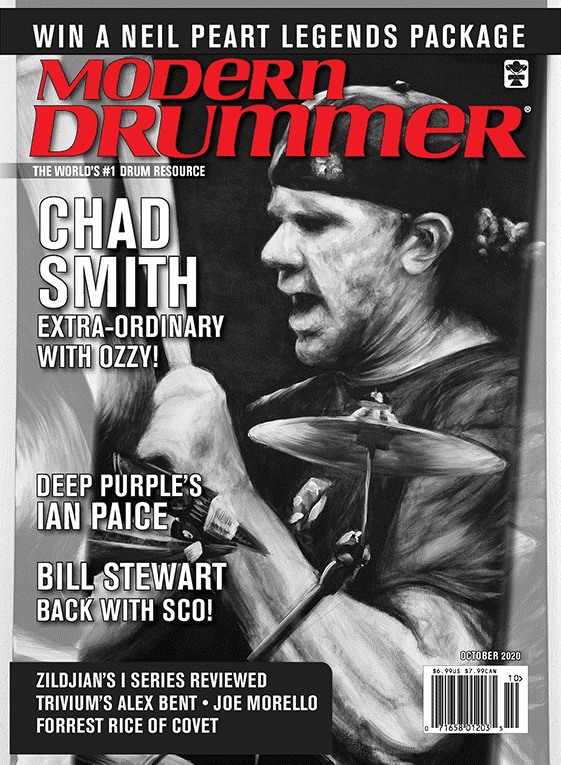Bill Bachman: Top 10 Rudiments Part 3: Triple-Stroke Roll

The triple-stroke roll, which is also known as “threes,” is yet another crucial rudiment. Once you can play this rudiment well, you’ll be armed with the ability to throw in isolated triple beats anywhere around the drumset.
Not many drummers play a complete two-handed triple-stroke roll on the kit. But triple strokes played by individual hands are pretty standard vocabulary. (For that matter, each hand actually plays a triple beat within a single-stroke sextuplet.)
Good-quality triple strokes are not simply bounced on the drumhead, nor is each stroke played individually with the wrist (unless you’re playing threes very slowly). It’s important to first develop a good double-stroke roll, since triple strokes are an extension of doubles. Threes should be played as flowing free strokes (aka full or legato strokes) where you never pick up the stick but only throw it down on the head like dribbling a ball. The first stroke should be played mainly with the wrist, while the second and third should be played mainly with the fingers (the “alley-oop-oop” technique). Think of the first stroke as the setup throw from the wrist and the second and third strokes as dribbles from the fingers. Immediately after playing the third stroke, the hand should relax so that the stick rebounds to the starting “up” position. Advertisement
At faster tempos, the technique will change slightly. You’ll have to pick up the stick after the third note when the increased speed makes it nearly impossible to play a free stroke. In this case, you will be a using a free-free-downstroke combination. The key is to use the fingers to add velocity to each individual stroke. When threes are played very fast, they will sound like a buzz roll. It’s a little- known fact, but most buzz rolls are actually played using three strokes per hand.
For some players, threes may be easier to play by positioning the hands closer to a French grip (thumbs on top of the stick), because so much finger control is necessary to play the second and third beats. French grip favors the use of the fingers, while German grip (palms down) favors the wrist. When you play these exercises, experiment with different positions between French and German grip to find what works best for you. It’s good to be comfortable with a bunch of hand positions, since different techniques will make certain patterns easier to play. Ultimately there is no “right” technique, and you want to be able to switch positions on the fly.



This article is culled from Bill Bachman’s popular Stick Technique book, which is designed to help players develop hands that are loose, stress free, and ready to play anything that comes to mind. The book is for everyone who plays with sticks, regardless of whether you’re focusing primarily on drumset, orchestral percussion, or the rudimental style of drumming. Divided into three main sections – Technique, Top-Ten Rudiments, and Chops Builders – Stick Technique is designed to get you playing essential techniques correctly and as quickly as possible. Also includes a bonus section two-hand coordination and independence. Advertisement






